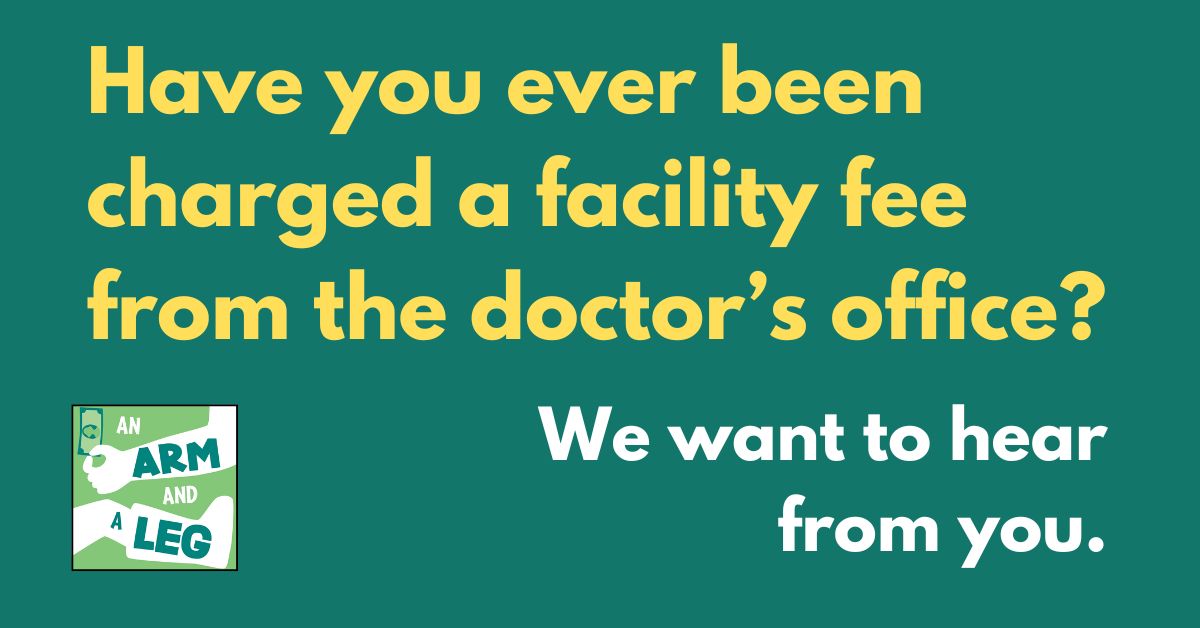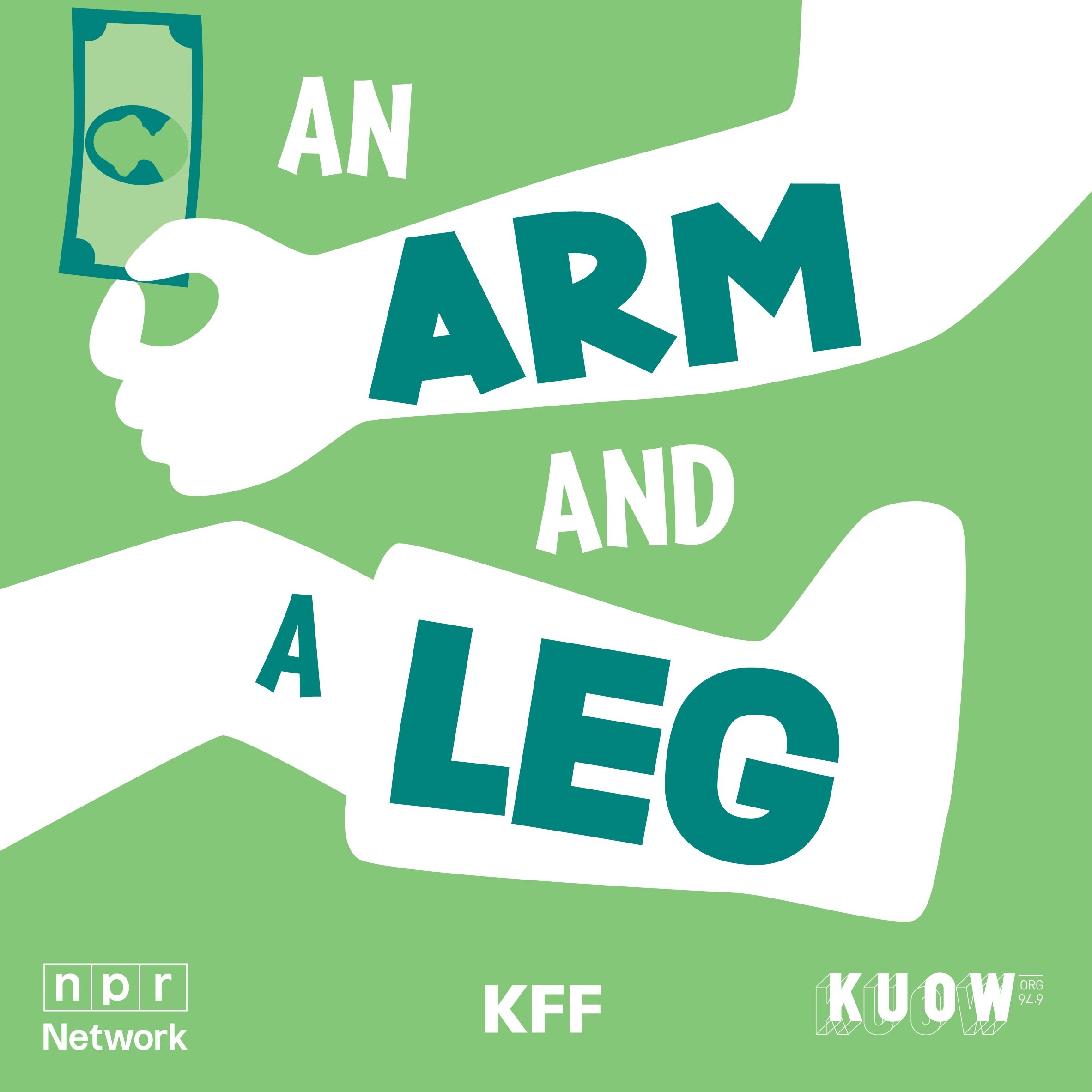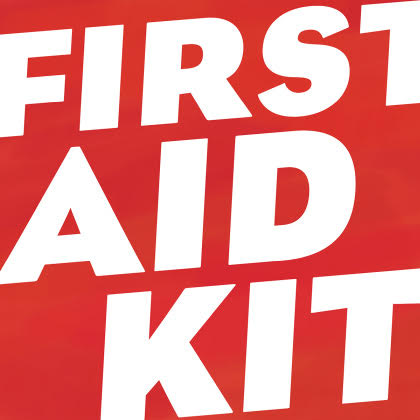Please note that this transcript may include errors.
Dan: Hey there—
We are starting a BIG new project here, and we could use your help. In fact, asking for your help is a big part of the project.
We’re looking at sneaky fees that rip money out of our pockets — we want to know how often this happens, and where, and how much we’re being taken for.
Here’s an example of what we’re talking about:
Esther Lee’s mom had arthritis, so she got steroid injections every month — and every month her share of the bill was thirty bucks.
Until suddenly, one month, it was more than three hundred and fifty.
Here’s Esther, talking with our pals at NPR and KFF Health News for their Bill of the Month series a few years ago— describing this weird charge on her mom’s bill
Esther Lee: It said operating room services. And she was like, I never went to any operating room. I went to the same doctor. I did the same procedure in the same office. Why is it all of a sudden saying operating room?
Dan: And again, that “same procedure” — it’s an injection, not surgery.
But that charge Esther’s mom got for operating-room services — it’s also called a “facility fee” — basically like a cover charge. Just for walking in the door.
And if you— or anyone you know— has been hit by one of these fees,
ESPECIALLY if, like Esther Lee’s mom, you were just going to the doctor — I want to hear about it. And I want to see the bill.
And if you’re up for it, I may want to talk to you on this show.
We want to see how much we can learn about these fees— because they seem to be sneaking onto more and more medical bills.
We’ve set up a form at arm and a leg show dot com, slash fees. You can upload a bill there. We’ll repeat that address later, and I’m gonna ask you to pass it around.
For now, I’ll give you a few details about how we got on this story, and then I’m gonna let class out early so you can please tell everybody you know to help us out.
This is An Arm and a Leg, a show about why health care costs so freaking much, and what we can maybe do about it. I’m Dan Weissmann. I’m a reporter, and I like a challenge. So our job on this show is to take one of the most enraging, terrifying, depressing parts of American life, and bring you a show that’s entertaining, empowering, and useful.
And I think digging into this TOGETHER — that’s gonna be one of the most empowering things we’ve ever done.
So, I first learned about facility fees— in stories by the reporter Sarah Kliff.
She’s at the New York Times these days, but when I talked with her, in 2018— for one of the very first episodes of this show— she was at Vox dot com.
And she had just wrapped up a year-long project, collecting people’s ER bills.
That project started with an email from a single reader.
He was a new dad, his baby had a cut, it was bleeding a lot and — new parents, you can maybe relate — he’d taken her to the emergency room, where she got a band-aid.
And then he got a bill for six hundred twenty-nine dollars. Which he sent to Sarah with a note saying basically, W.T.F.
Sarah told me she was like, Hmmmm…
Sarah Kliff: I did not understand this bill, but I decided to find out.
Dan: And what did you find out?
Sarah Kliff: So I found out that, um, the band aid itself was actually, um, I hate to say it’s like, what’s cheap.
It was 7. Like that’s an insane, like you can buy a lot of band aids at CVS for 7, but the band aid only represented 7 of this charge.
Dan: The rest was.. a mystery.
But she had a source to ask about it. A researcher who was also an ER doc.
Sarah Kliff: And she’s like, oh yeah, that’s the facility fee. That’s obvious. Um, and then like, I’m like, back here Googling like, what is an emergency room facility fee?
Dan: As Sarah learned, it was like a cover charge at a nightclub. Price of admission, just for walking in the door.
But that definition just made her more curious: What’s the deal with facility fees? For one thing, how common are they?
Sarah Kliff: It was like such a mysterious charge to me. And I wanted to know more about it. And I kind of had this like pie in the sky idea. Like, wouldn’t it be cool?
If we could just figure out what facility fees are by collecting like a ton of bills.
Dan: That’s how Sarah ended up asking readers — asking the world— to send her their emergency room bills. Over the course of a year, she pulled in more than a thousand of them, read them all.
By the time I talked with her, she’d done some math on them too: Those bills included a total of 4 million dollars just in ER facility fees.
That’s an average of four thousand bucks just for showing up. Turns out the guy with the six hundred dollar band-aid had gotten off easy. One woman had apparently been charged a facility fee of 16 thousand dollars.
Sarah Kliff: Um, it was someone who’s bitten by a cat.
Dan: So with a thousand bills to look at, what jumped out at Sarah Kliff was how much these fees varied from place to place.
Sarah Kliff: Like, I knew there was variation, but I didn’t understand, like, you are really, Yeah. Rolling the dice, depending on which hospital you go to, like two hospitals very close to each other could have wildly different fees and you just have like no idea what you’re getting into and you have no way to figure it out in advance.
Dan: When I asked Sarah Kliff: Aren’t all these fees just BS? … she wasn’t sure.
Hospitals make a case for these fees, and she appreciated the logic behind it.
Sarah Kliff: Emergency rooms are a wonderful service that operate all across the country, and you can go in there at any time, and they’re open 24 hours a day, 7 days a week, and they see every patient. Um, that’s a really important part of our healthcare infrastructure.
Um, so, I get that, and I get that costs money.
Dan: OK, but look. We’re not just talking about ER’s anymore. More and more, these facility fees are showing up in all kids of places. Like getting a steroid injection in a doctor’s office. That’s the example we heard about right at the top of this episode, from Esther Lee.
Esther: I went to the same doctor. I did the same procedure in the same office.
Dan:: But that office belonged to a hospital. It wasn’t IN the hospital. But the hospital decided to start charging a facility fee.
These days, you don’t even have to go to the doctor’s office to get stuck with a facility fee. A reporter with our pals at KFF talked last year with a woman who was charged an 800 dollar facility fee for a telehealth appointment.
And in our own reporting, we’ve found that it’s actually not just hospital systems charging facility fees. We talked to a listener who was looking at a facility fee from a doctor’s office that wasn’t owned by a hospital.
But we did find out: Private equity investors were involved with that medical practice.
And like we’ve talked about on this show: more and more medical practices are getting gobbled up by hospitals, by private equity, by big corporations
So a majority of doctors now work for someone else. Someone who may want to charge you a facility fee
And we want to know: How often is this sort of thing happening? WHERE is it happening? How much are people getting charged?
And this is where you come in.
Over the next few weeks, we want to hear from as many folks as we can about these kinds of facility fees that sneak onto medical bills. We want to collect a pile of bills with charges like this, and the stories behind them.
So we’ve set up a special spot at our website: where anybody who has gotten a bill like this can share it with us.
And of course YOU may never have gotten a bill with this kind of sneaky charge. But maybe it’s happened to your mom, or your friend, or someone you know? Or someone they know?
And I want to ask for your help, spreading the word about this project. Asking everybody you know if they’ve gotten a medical bill with a facility fee tacked on.
And sending them to: arm and a leg show dot com, slash, fees.
I’ve got a link to that wherever you’re listening to this.
And you can help us by spreading it around on whatever social networks you use: Facebook, Ex-Twitter, LinkedIn, Instagram, you name it… And I have made my first-ever TikTok video. I HATE seeing myself on camera, but I’m thinking— maybe more people will see this and spread it around. That’s how much I want to get these stories.
And look: these are such important stories to collect.
Because, lemme tell you something else: Some states have passed laws trying to rein in facility fees for stuff that doesn’t happen at hospitals.
But experts say it’s really hard to tell if health providers are even following those rules. The data officials have access to? It doesn’t always show whether a visit happened at a hospital, or a doctor’s office, or any of that.
So we need to see bills, and we need to hear stories.
If you share a bill with us, we may get in touch to get more details, and if you’re game, your voice could end up on this show.
Spread the word. Check for those links wherever you’re listening to this.
We will keep your medical information under LOCK AND KEY. I’ve been working with the folks who run our website to make sure that the form where you share your bill with us is as secure as it can be.
Thank you so much for helping us with this. I’m excited to dive into this project with you. I’ll catch you in a few weeks.
Till then, take care of yourself.
This episode of an arm and a leg was produced by me, Dan Weissmann, with help from Emily Pisacreta, and edited by Ellen Weiss.
Adam Raymonda is our audio wizard. Our music is by Dave Weiner and blue dot sessions. Extra music in this episode from Epidemic Sound.
Gabrielle Healy is our managing editor for audience. Gabe Bullard is our brand-new engagement editor— welcome Gabe! Because you’re here, we can actually dig into this project.
Bea Bosco is our consulting director of operations. Sarah Ballama is our operations manager.
And Arm and a Leg is produced in partnership with KFF Health News. That’s a national newsroom producing in depth journalism about healthcare in America and a core program at KFF, an independent source of health policy research, polling and journalism.
Zach Dyer is senior audio producer at KFF Health News. He’s editorial liaison to this show.
And thanks to the Institute for Nonprofit News for serving as our fiscal sponsor, allowing us to accept tax exempt donations. You can learn more about INN at INN. org.
Finally, thanks to everybody who supports this show financially— you can join in any time at arm and a leg show dot com, slash, support — and thanks for listening.


